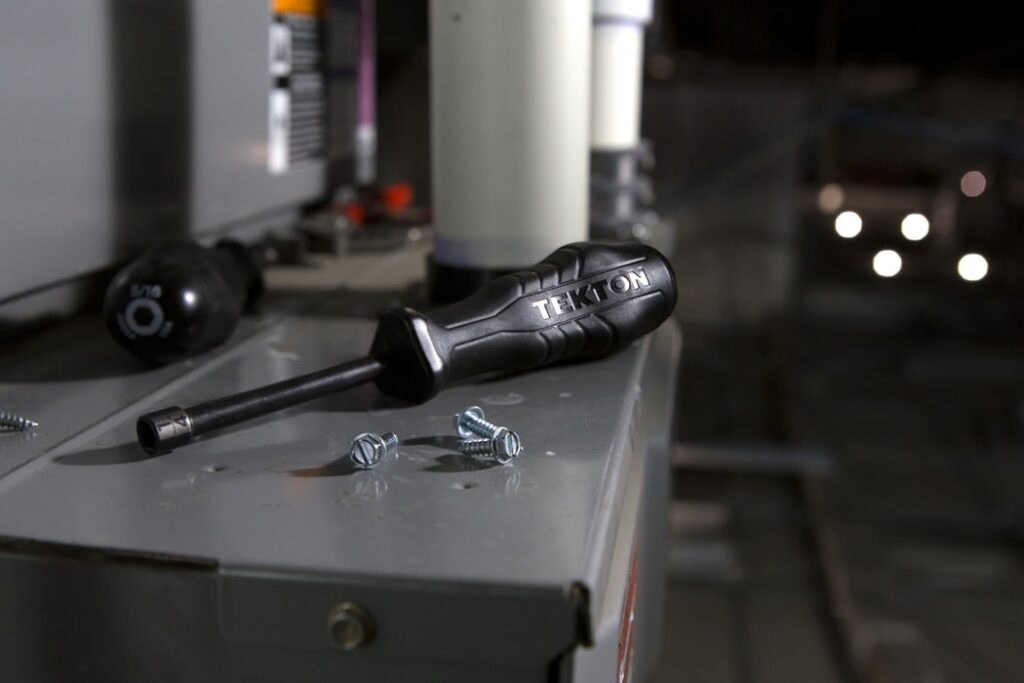Optimizing your building’s HVAC system provides a variety of different benefits. For one, an optimized HVAC system can dramatically reduce energy costs. Beyond that, optimizing an HVAC system can also offer a world of benefits for your employees and their outputs.
- Researchers at Cornell University found that if employees had to work in an environment that was too cold, they made 44% more errors, and their productivity dropped in half.
- However, if it’s too hot, there are similar issues. One study found that productivity drops by up to four percent per degree once the temperature goes above eighty degrees Fahrenheit.
Temperature control isn’t the only thing to consider. Air quality is another factor.
- Poor indoor air quality can reduce productivity by six to nine percent. And contrary to popular belief, indoor air has a higher concentration of pollutants than outdoor air does.
- Sometimes indoor air pollutant concentrations are as high as five times the concentration of pollutants outdoors. Air pollutants can cause a variety of health issues for your workers.
So, optimizing your HVAC system is incredibly important. Having a functional HVAC system not only improves employee comfort, but it reduces energy costs, boosts productivity, and minimizes health issues.
How do you optimize your HVAC system? Here are six tips for HVAC optimization.

Tip One: Change and Inspect Air Filters
This one’s simple, but it’s often overlooked. Air filters clean the air and allow the machine to continue working correctly. If air filters aren’t frequently changed or cleaned, they can cause additional strain on the system, lead to overheating, and eventually cause the entire system to fail.
How frequently you change your filters depends on your model. Generally, it falls anywhere between three weeks and six months. However, it’s a good idea to inspect the air filters in between changes to check for any clogs.
Tip Two: Check on The Thermostat
The thermostat can cause the HVAC system to operate incorrectly. If it’s older or if the wiring has gotten messed up, it could be impacting your overall performance. If the thermostat is displaying the wrong temperature, you could be unnecessarily rising or lowering the temperatures, causing increased electric bills and uncomfortable employees.
Tip Three: Prioritize Ventilation
Ventilation is responsible for fresh air circulation and the removal of pollutants. Without proper ventilation, you can run into a rise in carbon monoxide levels and a reduction in overall air quality. Many modern office ventilation systems help monitor temperature, oxygen, and humidity levels. If your ventilation is underperforming, your entire HVAC system could suffer.
Tip Four: Consider an HVAC Zoning System
In standard HVAC setups, you set one temperature for the entire building. Air shoots out all the ducts, and if you want a room not to get that airflow, you simply shut the vent. The issue is that blowing air down ducts where you don’t want it to blow eats up a lot of energy and causes unnecessary strain on the system. Zoning systems allow you to set up your building to have different temperatures. Generally, this is done using something called dampers.
There are several unique types of dampers that all provide their own benefits. However, they’re critical components to creating a zoned HVAC system. HVAC zoning is worth considering because it ensures that you’re only using what you need and not unnecessarily running up costs.
Tip Five: Retrofit or Upgrade
If your system is older, it might be worth upgrading to a more effective model. Today, there’s a wide range of energy-efficient HVAC systems on the market. However, if you don’t want to invest in an entirely new system, you can also consider retrofitting.
Retrofitting is simply adding new parts to optimize your model without having to buy a whole new unit. If your current system is still functional, but it’s not performing as well, it could be worth considering retrofitting.
Tip Six: Focus on Insulation
No matter how much work you do to the system itself, if your building isn’t adequately insulated, you’re not going to be operating at an optimum level. Take time for sealing doors and windows. Ensure that all the walls are insulated, so the outside air isn’t able to seep inside, and the inside air isn’t able to make its way out.
Insulation ensures that your system doesn’t have to work in overdrive to control the temperature.
Continue the Optimization with Regular Maintenance

Even the best systems require regular maintenance. From the duct system to the compressor, your system needs a routine inspection to ensure all the pieces are functioning correctly. Additionally, there are several parts of the unit that need to be regularly cleaned, like the condenser line and the ignition switches.
Ultimately, if you follow these tips and have regular maintenance, you’ll have an optimized HVAC system. As a result, you’ll have more comfortable and productive employees and lower energy bills.
Matt Lee is the owner of the Innovative Building Materials blog and a content writer for the building materials industry. He is focused on helping fellow homeowners, contractors, and architects discover materials and methods of construction that save money, improve energy efficiency, and increase property value.
ASHLEY BARAJAS
